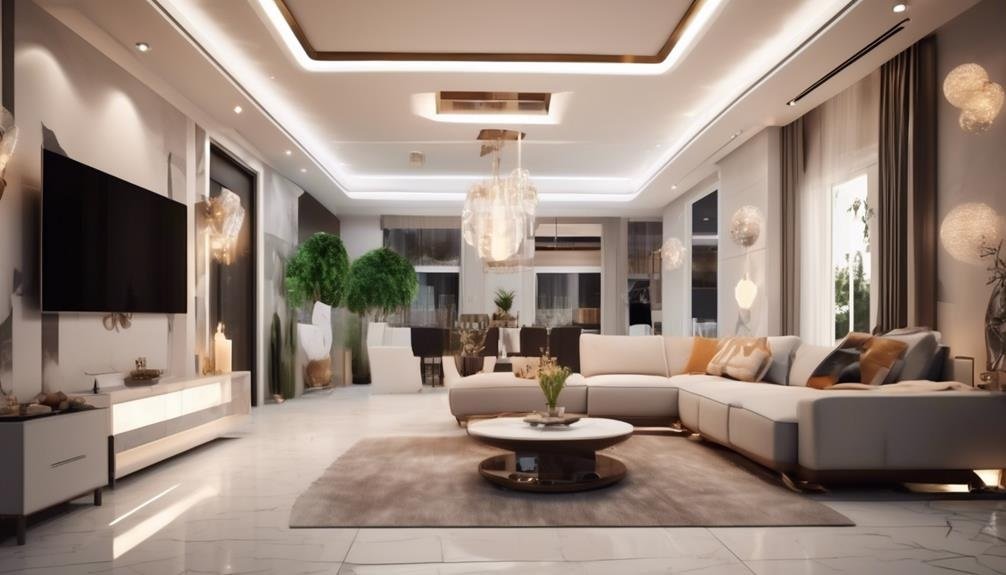The pervasive spread of technology in our daily lives has not only altered the way we work and play but has also seeped into the very fabric of our homes. The concept of home automation, once a futuristic curiosity, is now a present and essential part of modern living. From the ability to control the thermostat from an app to a refrigerator that can order groceries, home automation is revolutionizing the domestic arena, providing us with comfort, convenience, and a more secure living environment.
Historical Perspective: From Simple to Smart
Home automation has a long and complex history. Its roots can be traced back to the Industrial Revolution where mechanisms were developed for providing automatic controls over various device functions in the early 20th century. The beginning of the 21st century saw the dawn of digital home automation, which has since evolved into the interconnected, intelligent systems we now enjoy.
Key Milestones in the History of Home Automation
- Early 1900s: The invention of the first electric vacuum cleaner and the electric iron, piqued the public’s interest in automated chores.
- 1930s-40s: The introduction of washing machines and dishwashers began to automate domestic tasks.
- 1950s-60s: The surge in television and kitchen appliances further cemented the idea of convenience within the home. Automatic-sequential controllers (early programmable logic controllers) were used to control home devices automatically.
- 1980s: The first home automation systems start to appear, controlling home elements like heating, ventilation, and air conditioning (HVAC). However, these early systems were typically complex, expensive, and not interconnected.
- Late 1990s: The growth of the internet began to offer opportunities to connect various systems.
- 2000s: Smartphones became a catalyst for home automation, providing a platform for users to control their homes remotely.
The historical progress is a testament to the growing desire for convenience, in both the digital and physical realms.
Impact on Modern Living: Efficiency, Safety, and Comfort
Home automation has transitioned from a luxury to a necessary component of contemporary living. Its impact can be observed in various domains, from increased efficiency and energy savings to the comfort and security it brings.
Convenience and Efficiency in Daily Tasks
Modern home automation streamlines daily tasks, making life more convenient. Appliances and systems operate with little to no human input, and routine actions can be planned and scheduled. Imagine waking up to a home where lights dimly illuminate the pathway from your bedroom to the kitchen, a coffee machine starts brewing your morning cup, and your living room TV is tuned to the morning news — all before your feet hit the floor.
Energy Efficiency and Cost Savings
Smart thermostats learn your preferences and adjust the temperature accordingly, saving energy and money. Connected lighting systems can intelligently light your home for maximum efficiency. These systems not only reduce your environmental footprint but also trim your utility bills.
Enhanced Security and Safety Features
One of the most appreciated aspects of home automation is its ability to keep your household secure. Advanced security systems monitor your home 24/7 and can alert you to any unusual activity. Safety systems can detect gas leaks, smoke, or even flooding, and can take automatic measures to prevent a crisis.
Technological Advancements: Building Intelligent Homes
The surge in technological capabilities has paved the way for creating homes that are responsive and predictive, catering to the unique needs and preferences of their inhabitants.
Internet of Things (IoT) Integration
The concept of IoT, where any device with an on/off switch can be connected to the internet, has been a game-changer. Homes are now filled with interconnected devices that communicate and collaborate to provide a seamless living experience.
Artificial Intelligence (AI) Applications in Home Automation
AI brings the power of adaptive learning and decision-making to home automation systems. AI algorithms can analyze and predict user behavior, making the home anticipate and fulfill your needs even before you articulate them. From adjusting the home’s environment to your mood to saving energy by optimizing various systems, the possibilities are endless.
Voice Control and Smart Assistants
The introduction of voice control through smart assistants like Amazon’s Alexa, Google Assistant, and Apple’s Siri has brought unprecedented ease of interaction. Users can control their home systems with simple voice commands, making the user interface more intuitive and accessible to all members of the household.
Future Trends in Home Automation: What’s Next?
Looking forward, the evolution of home automation is poised for further advancements that will continue to shape how we live and interact with our spaces.
Emerging Technologies in Home Automation
In the coming years, we can expect the integration of augmented reality (AR) and virtual reality (VR) into home automation, enabling more immersive and interactive home interactions. We also anticipate the development of even more sophisticated sensors and actuators that will further empower our homes to understand and cater to our needs.
Potential Challenges and Opportunities
The growing complexity of home automation systems presents both challenges and opportunities. Ensuring data privacy and cybersecurity will be crucial, as will the need to make these technologies more accessible and affordable.
Predictions for the Future of Smart Homes
In the distant future, we may see homes that are entirely self-sustained, with automated systems managing everything from energy production to waste management. While this vision may be years away, the incremental advancements we continue to make bring us closer to a world where homes are not just smart, but truly intelligent.
Conclusion
The story of home automation is one of ongoing innovation. From its humble beginnings in the early 20th century to the interconnected marvels of today, home automation has the potential to continually enrich our lives. By understanding the technology’s evolution, we can better adapt to and benefit from the conveniences it offers, while also staying informed about the possible impacts and issues it may bring.


